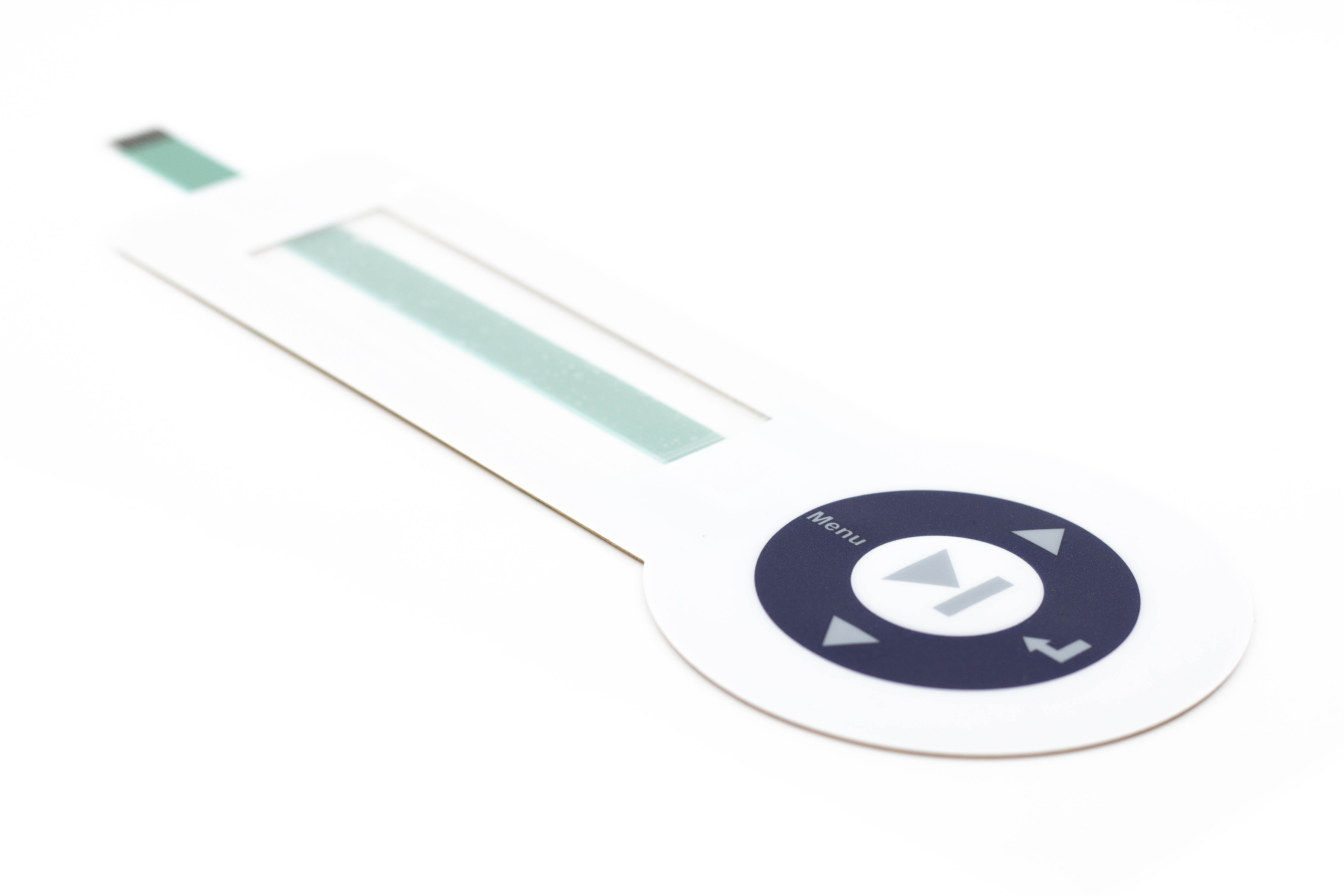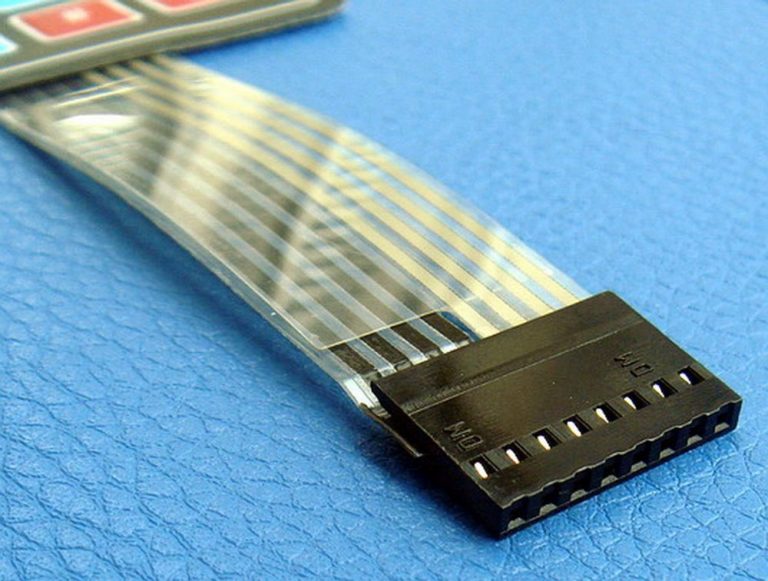How Membrane Switches Are Designed for Easy Maintenance and Repair
Wiki Article
Discover How Membrane Switches Feature and Their Duty in Modern Electronics
Membrane Switches stand for an advanced integration of technology and style within the world of modern electronics, serving as important interfaces in countless tools. Comprehending the ins and outs of Membrane button performance and their more comprehensive implications in improving customer experience welcomes further expedition into their layout, advantages, and the cutting-edge developments forming their future in innovation.
What Are Membrane Switches?

Membrane buttons are identified by their sturdiness and resistance to ecological aspects, such as dust, wetness, and severe temperatures. They can be tailored with different graphics, shades, and responsive feedback options, improving customer experience while keeping aesthetic allure - membrane switches. The unification of published circuits permits for seamless integration into gadgets, boosting overall performance.
The flexibility of Membrane buttons is noticeable in their ability to support both complicated and basic control functions. They can include features such as LED signs and touch-sensitive innovation, providing to certain user needs. As modern technology continues to evolve, Membrane Switches continue to be essential for making it possible for efficient and instinctive customer interfaces, thus playing a crucial role in the improvement of modern electronic devices.
Components of Membrane Switches
Membrane buttons are made up of several vital elements that interact to develop a trustworthy and practical interface. The primary components include the visuals overlay, adhesive layer, spacer layer, and conductive traces.The graphic overlay works as the individual interface, generally published on a flexible substrate such as polyester or polycarbonate. This layer not only gives aesthetic appeal yet likewise consists of responsive comments, aesthetic cues, and protective functions. Underneath the graphic overlay exists the sticky layer, which secures the switch to the device and guarantees toughness against environmental stress and anxieties.
The spacer layer is vital for keeping the essential space between the visuals overlay and the circuit layer. When stress is used, this void enables for the activation of the switch. The conductive traces, generally made from silver or carbon, create the electric paths that finish the circuit when the button is engaged.
In addition, a support layer may be consisted of for architectural support and insulation. These elements work together flawlessly, ensuring that Membrane switches are both easy to use and durable, making them crucial in various modern electronic applications.
How Membrane Switches Work
How check it out do Membrane Switches function effectively within electronic devices? Membrane Switches run on the concepts of pressure-sensitive technology, using a layered construction that consists of visuals overlays, glue layers, and conductive aspects.The layout of Membrane switches is crucial for their reliable procedure (membrane switches). The layers are thoroughly crafted to offer responsive comments, toughness, and resistance to ecological factors such as dampness and dust. The inclusion of domes-- small, elevated locations within the button-- improves responsive action, offering customers with an obvious click sensation upon activation
Furthermore, Membrane switches can be tailored in regards to dimension, shape, and graphics, making them appropriate for numerous applications. They are usually made use of in control panels, medical official site devices, and customer electronic devices due to their smooth layout and integrity. Generally, the effective performance of Membrane buttons is essential in boosting customer communication and guaranteeing seamless operation in contemporary electronic tools.

Applications in Modern Gadgets
Utilizing their distinct style and functionality, Membrane switches have ended up being indispensable components in a variety of contemporary electronic devices. These functional interfaces are employed in customer electronics, commercial equipment, medical devices, and vehicle controls, offering smooth customer interaction.In consumer electronics, Membrane switches are commonly located in home appliances like microwaves, washing makers, and other family gadgets, where they enable user-friendly control with a smooth profile. Their low-profile style helps with integration into compact gadgets, enhancing aesthetic allure without compromising functionality.
In commercial applications, Membrane Switches see it here work as control panels for equipment, using durability and resistance to harsh settings. Their capacity to withstand dampness and pollutants makes them optimal for use in production and handling sectors.
Clinical gadgets also profit from Membrane switches, which are developed to be very easy to tidy and keep, making certain hygiene in medical settings. They are usually utilized in diagnostic tools, patient tracking systems, and portable medical tools, where reliability is extremely important.
Benefits of Membrane Switches
One of the key advantages of Membrane buttons is their convenience, which enables them to be customized for a selection of applications throughout multiple markets. These switches can be developed in various sizes and shapes, fitting unique product demands while giving seamless assimilation right into gadgets. Their slim account allows a portable and sleek layout, often boosting the visual appeal of digital items.An additional substantial advantage is their longevity - membrane switches. Membrane switches are commonly resistant to dust, wetness, and chemicals, making them perfect for severe atmospheres. This strength extends their life expectancy contrasted to traditional mechanical buttons, reducing the need for regular substitutes
Furthermore, Membrane Switches deal cost-effectiveness. The production procedure entails printing innovations that reduce production costs, especially for big runs. This affordability, integrated with low upkeep requirements, makes them an eye-catching alternative for producers.

Final Thought
In conclusion, Membrane Switches represent a significant improvement in individual interface modern technology within modern electronic devices. As the need for resilient and instinctive interfaces proceeds to grow, the duty of Membrane switches in shaping customer experience will undoubtedly broaden.Membrane Switches stand for an advanced combination of innovation and style within the world of modern electronic devices, offering as necessary interfaces in many gadgets.In the world of modern-day electronics, Membrane Switches offer as critical parts that promote user interaction with gadgets. As technology continues to advance, Membrane Switches remain important for making it possible for reliable and intuitive individual interfaces, thus playing a crucial role in the innovation of contemporary digital devices.
Just how do Membrane Switches feature effectively within electronic devices? On the whole, the effective functioning of Membrane buttons is crucial in boosting individual interaction and making sure seamless procedure in modern-day digital tools.
Report this wiki page